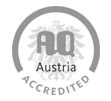Central Europe toward Sustainable Building
July 28, 2010
At the "Central Europe toward Sustainable Building" conference, which took place in Prague in June/July 2010, Sabine Sedlacek from the Department of Public Governance and Management presented two studies about the effectiveness of regional councils for sustainable building. Results from an online survey about governance aspects of sustainable building councils provide a valuable insight in their structures, their working processes and the role they play in regional governance settings. The question “Do green building councils make sense?” was subsequently assessed.
The presented papers resulted in two publications:
Sedlacek, S. , "Governance aspects of sustainable building councils - results from a survey", CESB 10 - Central Europe towards sustainable building , Prague, Czech Republic, Grada Publishing for Department of Building Structures and CIDEAS Research Centre, pp. 723-726, 30/06/2010.
www.modul.ac.at/governance-aspects-sustainable-building-councils-results-survey
Abstract
The sustainable building sector is rapidly changing recently. Under the umbrella of the World Green Building Council (WGBC) many countries have already or are starting to set up regional councils which will be analyzed within this paper. For such an analysis the following questions will be addressed: What types of organizational structures and settings suit best? What kind of different stakeholder constellations can be found? What role does policy play? What role does industry play? What are the main purposes of these organizations? In order to answer these types of questions we will conduct an online questionnaire based survey focusing on the WGBC regional councils on a global scale (i.e. Europe, Asia Pacific, South, Central & Latin America, countries outside regional jurisdiction). The survey will help us to identify the differences of stakeholder constellations, organizational settings, partnership models, and the different roles of policy and industries within the different regional councils. Besides the international implications the survey allows us to conduct special analyses for Central Europe and to report on the current developments and progresses in this particular geographical area.
Sedlacek, S., Maier, G. , "Do green building councils make sense? - An economic analysis", CESB 10 - Central Europe towards sustainable building , Prague, Czech Republic, Grada Publishing for Department of Building Structures and CIDEAS Research Centre, pp. 681-684, 30/06/2010.
www.modul.ac.at/do-green-building-councils-make-sense-economic-analysis
Abstract
Stimulated by the rapid development of Green Building Councils (GBCs) over recent years, this paper asks the question, whether or not such organizations make sense economically. Do they provide a service that is economically valuable to the construction and real estate industry? The answer to this question is of utmost importance also to GBCs, because only when they provide such a service will they be supported by that industry in the long run.We develop a simple model of real estate developers and investors and identify an information problem between them that locks them into a prisoners’ dilemma (often called “circle of blame”). This seems to be an important factor that can explain the current popularity of GBCs as well as the strong involvement of industry in these initiatives. The model also allows us to apply some concepts from institutional economics in order to derive additional results for the organization of GBCs. Most importantly, only when they choose to provide instruments for overcoming the prisoners’ dilemma deadlock will they be valuable for industry and thus be able to secure its support in the long run.





